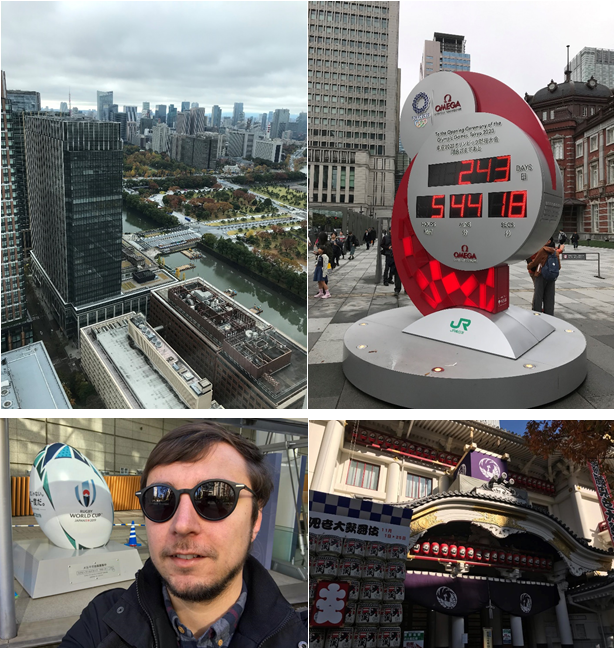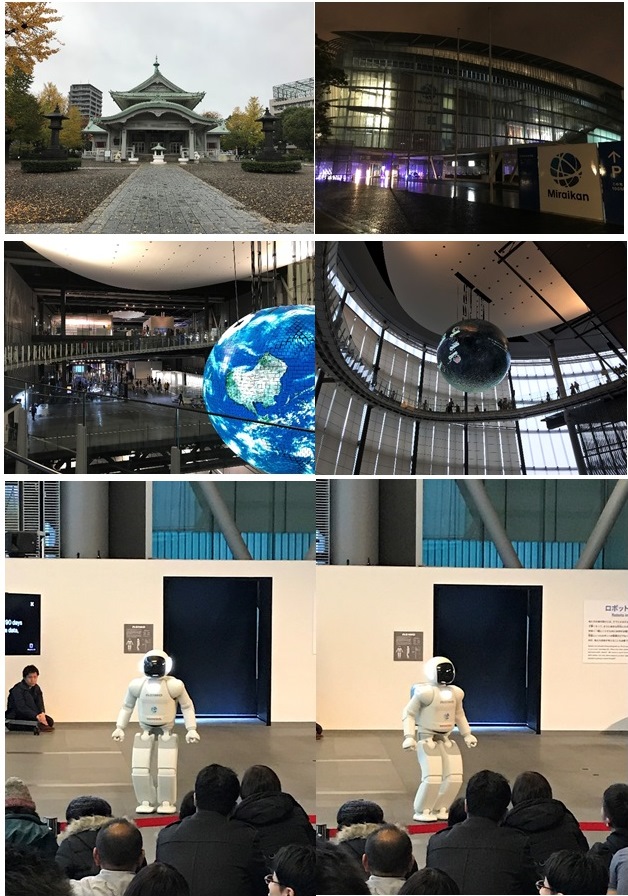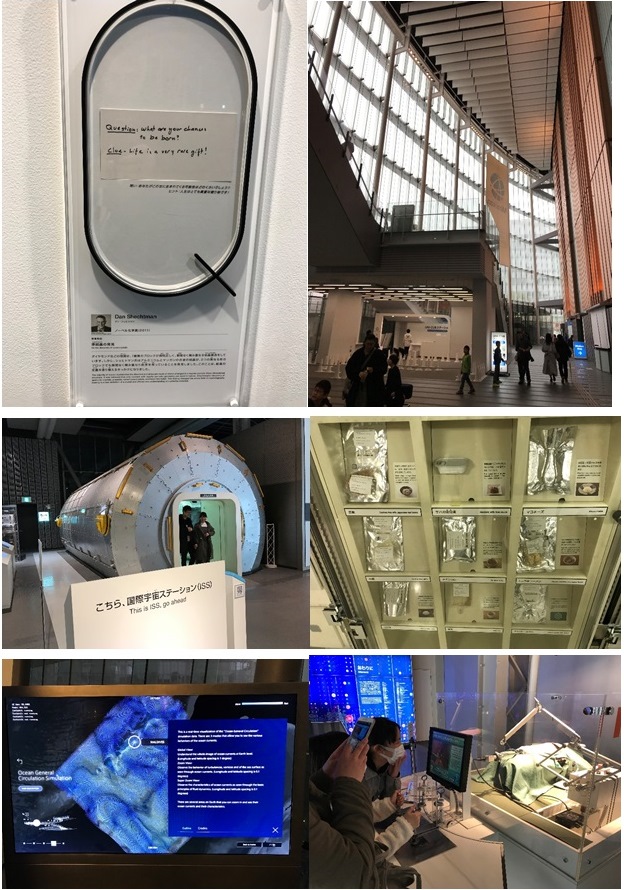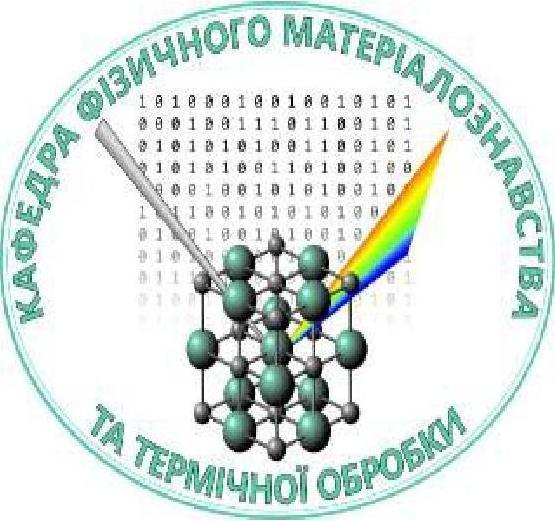News
Nanostructured materials become effective thermoelectric converters!
An interesting scientific direction is headed by scientists of the Metal Physics Department Prof. Yu.M. Makogon and Ph.D. R.A. Shkarban: “Nanoscale thermoelectric films as an alternative energy sources and coolers”.
Thermoelectric materials allow to generate an electric current from heat or are used for heat removal – as a coolers. At the same time they functionate silently and have a long period of operation.
Currently, scientists of the department are studying the structure of films based on skutterudite CoSb3 – as a material with a unique crystal lattice, which has the potential for use in thermoelectricity. According to theoretical calculations, the transition to nanoscale materials can increase the thermoelectric efficiency several times by reducing the thermal conductivity at the boundaries of layers and grains.
The areas of industrial application:
- microgenerators for autonomous power supply of low-power electronic devices;
- film refrigerators in the element base of the nanoscale range for computer equipment and infrared sensors;
- sensors or coolers in cars.
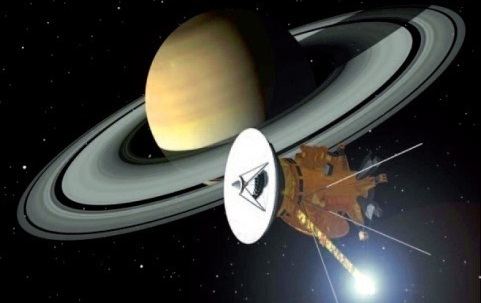
Materials that generate electricity from heat were first seriously tested after the start of the space age in the 1960s. During the Apollo mission, these thermoelectric materials provided the devices with electricity.
In 1997 the Cassini probe was launched to Saturn and its satellites on which the electric current was made by means of the thermoelectric generators made of SiGe. Thermal decomposition of approximately 30 kg of Plutonium-238 was used as an energy source.
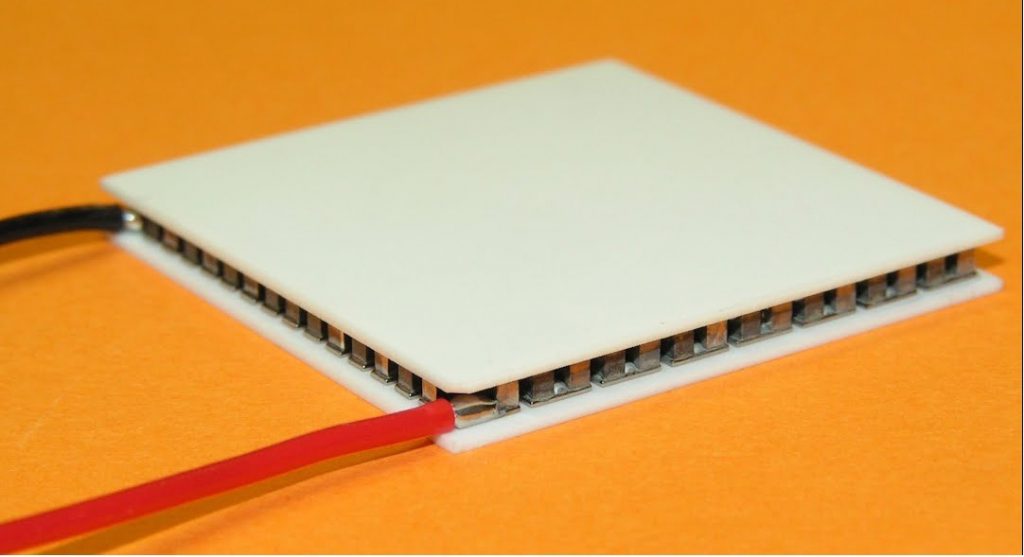
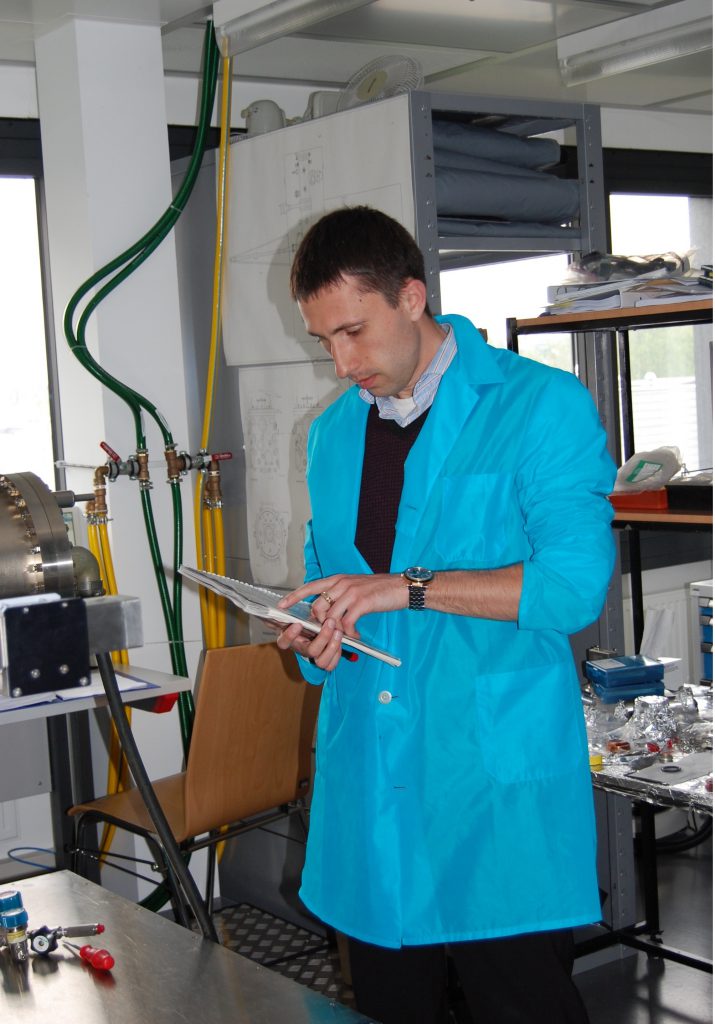
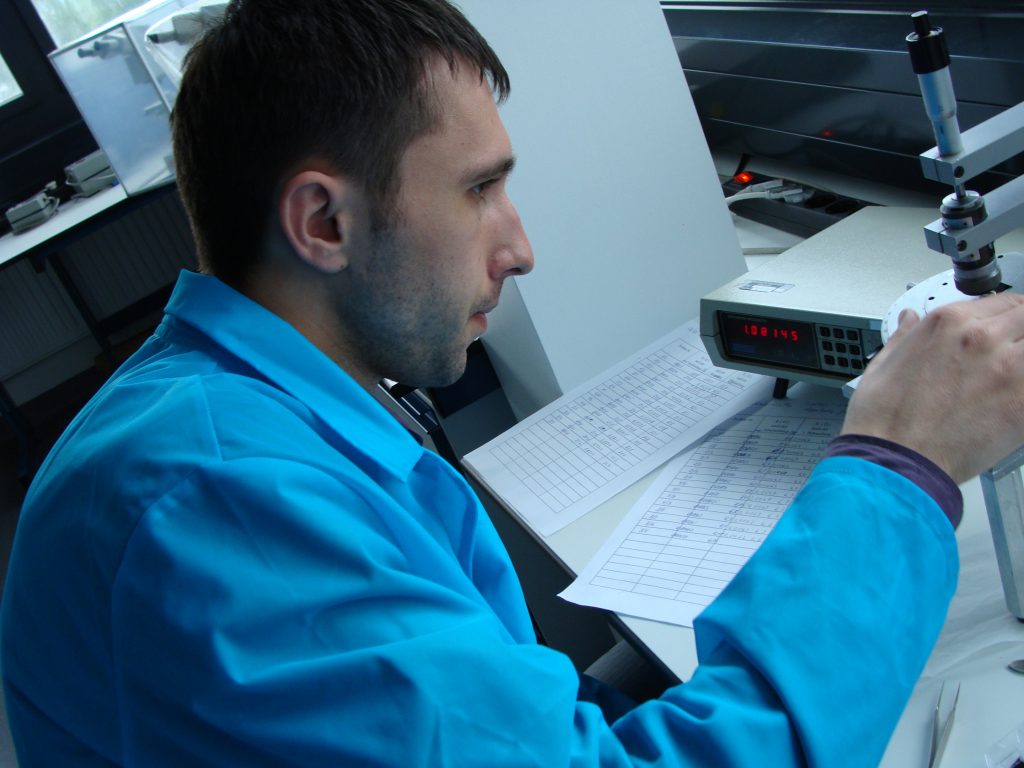

A new state of matter has been discovered! What do we know about glass? What about liquid glass?
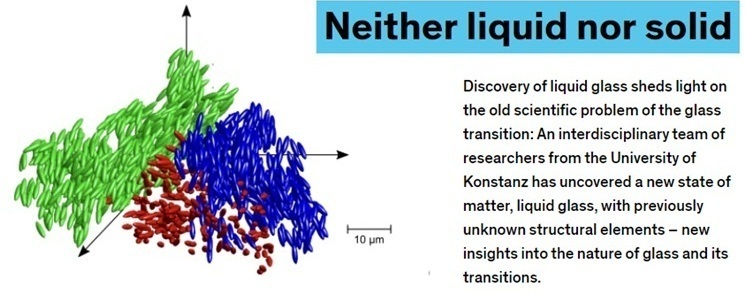
Glass objects surround us every day. We know that they are, in the usual sense for us, hard and fragile. However, not surprisingly, some physical and chemical properties of glass remain unknown. In addition, scientists call “glass” not only a solid substance based on silicon oxide, but also some types of metals, plastics, proteins and even biological cells. The fact is that when a substance passes from a liquid state to a solid, the atoms or molecules in it are lined up in a certain order, forming a crystal lattice. In the case of glass, such a process does not occur. At the moment of transition from a liquid state to a solid in vitreous materials, the atoms are “frozen” even before the substance acquires a crystalline structure. Such materials, in which there is no crystalline structure, are called amorphous materials.
In the laboratory, to obtain and study vitreous materials, use colloidal suspensions – mixtures or liquids that contain solid particles of micrometer scale. As a rule, laboratory particles have a spherical shape. However, most natural and technical systems consist of particles of non-spherical shape.
Scientists have created a colloidal suspension based on ellipsoid-shaped plastic particles. Such particles, in contrast to spherical, are characterized by a certain orientation.
Predicting the existence of liquid glass has remained a theoretical hypothesis for the past twenty years, and today this model can help study the behavior of complex systems in various scales – from molecular to astronomical. Also, this study has the prospect of application in the development of liquid crystal devices.
According to the materials:
Jörg Roller, Aleena Laganapan, Janne-Mieke Meijer, Matthias Fuchs, Andreas Zumbusch: Observation of liquid glass in suspensions of ellipsoidal colloids, PNAS, 4 January 2021. URL: https://doi.org/10.1073/pnas.2018072118
More details at the link: https://www.uni-konstanz.de/en/university/news-and-media/current-announcements/news-in-detail/weder-fluessig-noch-fest-23746/
It is known that ordinary magnets always have two poles – south and north!


Even if you divide the magnet into several parts, each of these parts will have two different poles (Fig. A). But there are magnetic molecules called “spin ice” (https://science.sciencemag.org/content/352/6288/962), which have the shape of interconnected triangular pyramids (Fig. B). This material is called “spin ice” because the magnetic dipoles form a structure that is characteristic of the location of water molecules in its solid state. This shape does not allow them to align to become a classic magnet with two different poles. Within a spin ice crystal, these wandering magnetic poles behave exactly like monopoles that can carry magnetic charges. The behavior and interaction of monopolies can be controlled, which provides great prospects for the creation of “spin ice” based on new devices, such as reprogrammed magnon crystals, capable of storing large amounts of information with high density. In confirmation, we publish drawings of the article https://science.sciencemag.org/content/sci/352/6288/962.full.pdf, in which the authors used magnetic force microscopy to record various ordered states of magnetic charges, as which the islands were Ni80Fe20 permalloy. The islands were collected in a two-dimensional “crystal” in the initial state (Fig. C). Then the selected square area was re-magnetized (Fig. D) with the subsequent “wiping” of the square area and writing a “circles” in it. In Fig. G on the same two-dimensional crystal after removing the previous record was written the word «ICE».
PROSPECTS OF the Metals Physics Department IN DEVELOPMENT OF MATERIALS FOR ATOMIC ENERGY. VISIT OF THE IAEA GENERAL DIRECTOR!
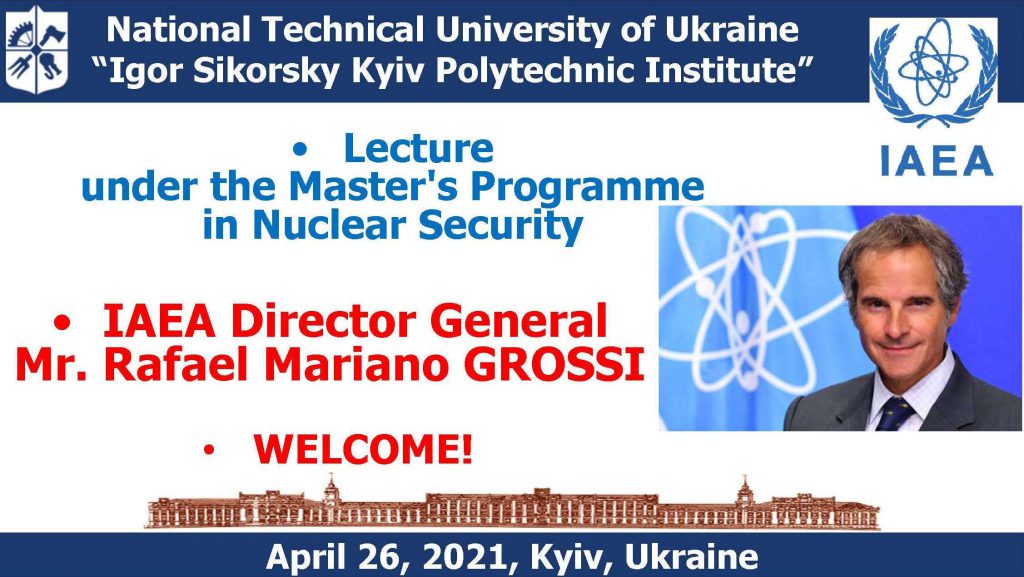
On April 26, the Director General of the International Atomic Energy Agency (IAEA), Dr. Rafael Mariano Grossi, visited the KPI.
During the visit, Dr. Grossi gave a lecture to students on “Physical Protection, Accounting and Control of Nuclear Materials”.
Reference: Rafael Mariano Grossi is a diplomat with more than 35 years of experience in the field of nuclear non-proliferation and disarmament. He has a doctorate in international politics and history. He has been the Director General of the IAEA since October 30, 2019.
In the context of the proposals discussed during Dr. Grossi’s visit, there were also international nuclear energy projects for submission to the new EU Horizon Europe Program, which is an attractive prospect for scientists and students of the Department of Metal Physics, which leads research in field of materials science.
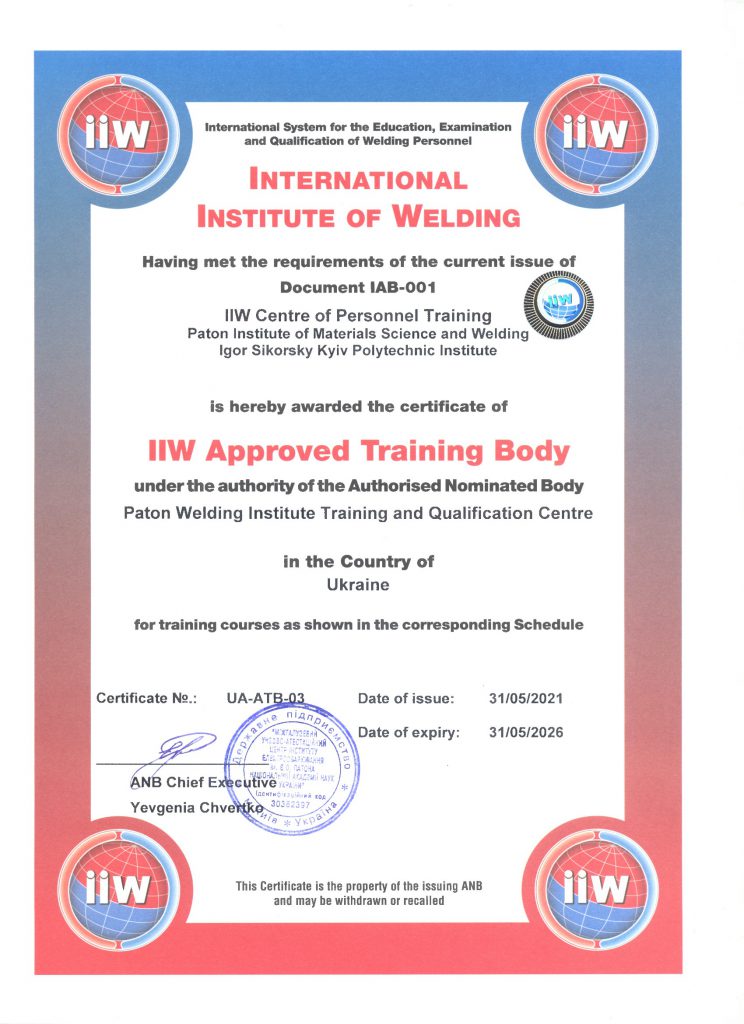
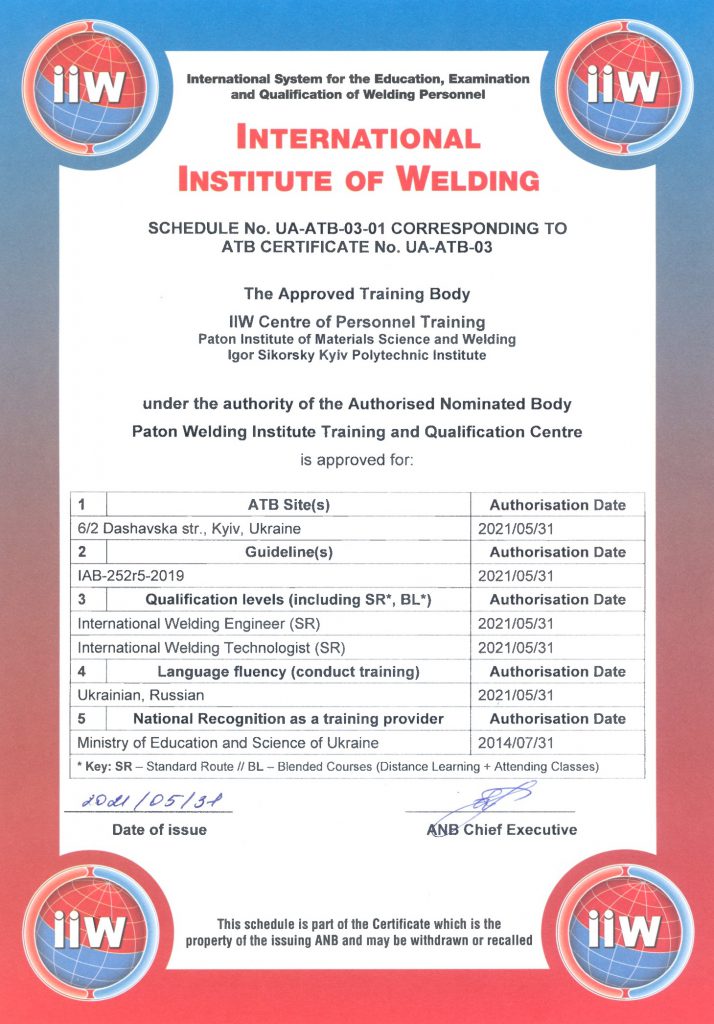

Scientists at the National University of Singapore have created a device called a shadow energy generator.
To do this, an ultrathin layer of gold was deposited on silicon, which is a typical material for solar cells. As in a solar cell, light falling on silicon amplifies its electrons. With a layer of gold, the shadow effect energy generator generates an electric current when part of the device lies in the shade.
Q. Zhang et al. Energy harvesting from shadow-effect. Energy & Environmental Science. Published online April 15, 2020. doi: 10.1039/d0ee00825g.
S.K. Ravi et al. Optical manipulation of work function contrasts on metal thin films. Science Advances. Vol. 4, March 2, 2018. doi: 10.1126/sciadv.aao6050.
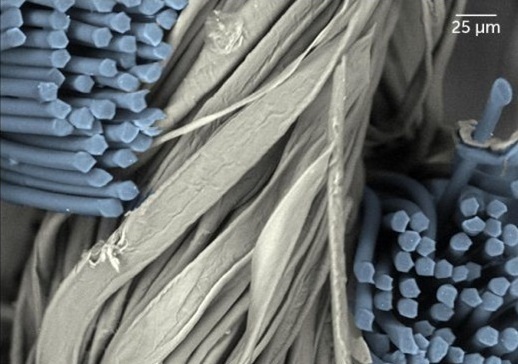
Using a scanning electron microscopy method, a team of researchers from the US National Institute of Standards and Technology has examined dozens of materials, including coffee filters, tissues, surgical masks and N95 masks, for their ability to protect against SARS-CoV-2, the virus that causes COVID- 19.
In 2020, the team found that N95 respirators are most effective at protecting against aerosols, such as those that carry SARS-CoV-2 A. It is also reported that synthetic fabrics such as chiffon or viscose do not retain as many particles as tightly woven cotton flannels.
C.D. Zangmeister et al. Hydration of hydrophilic cloth facial coverings greatly increases the filtration properties for nanometer and micron-sized particles. ACS Applied Nano Materials. Published online March 8, 2021. doi: 10.1021/acsanm.0c03319.
C.D. Zangmeister et al. Filtration efficiencies of nanoscale aerosol by cloth mask materials used to slow the spread of SARS-CoV-2. ACS Nano. Vol. 14, June 25, 2020, p. 9188. doi: 10.1021/acsnano.0c05025.

Associate Professor of Metals Physics Department, Igor Vladimirsky, has received the title of Senior Researcher in specialty 132 – Materials Science (order of the Ministry of Education and Science of Ukraine №420 from 19.04.2021).
Congratulations to our colleague with another significant achievement!
Igor Vladimirsky’s scientific works are known in Ukraine and abroad, thanks to his efforts the department carries out powerful international projects, modernizes equipment, prepares diploma theses and candidate’s dissertations. And this is just the beginning!
We expect from the talented graduate of our department new achievements which will promote growth of authority of the department of metals physics and a rating of a specialty 132 – Materials Science.
Nanostructured materials become effective thermoelectric converters!
An interesting scientific direction is headed by scientists of the Metal Physics Department Prof. Yu.M. Makogon and Ph.D. R.A. Shkarban: “Nanoscale thermoelectric films as an alternative energy sources and coolers”.
Thermoelectric materials allow to generate an electric current from heat or are used for heat removal – as a coolers. At the same time they functionate silently and have a long period of operation.
Currently, scientists of the department are studying the structure of films based on skutterudite CoSb3 – as a material with a unique crystal lattice, which has the potential for use in thermoelectricity. According to theoretical calculations, the transition to nanoscale materials can increase the thermoelectric efficiency several times by reducing the thermal conductivity at the boundaries of layers and grains.
The areas of industrial application:
- microgenerators for autonomous power supply of low-power electronic devices;
- film refrigerators in the element base of the nanoscale range for computer equipment and infrared sensors;
- sensors or coolers in cars.
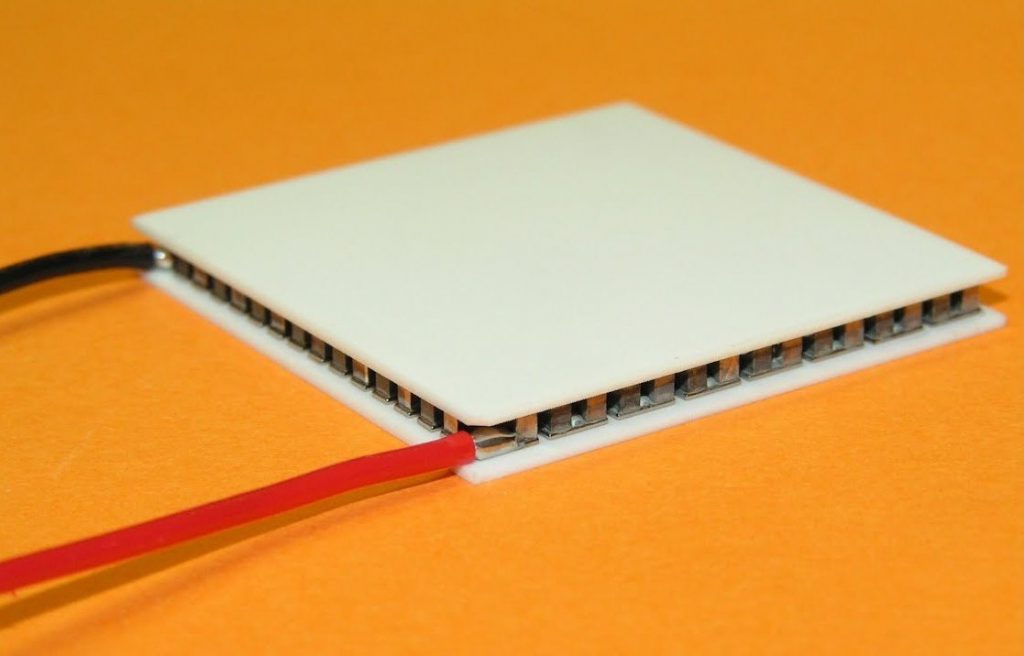

Materials that generate electricity from heat were first seriously tested after the start of the space age in the 1960s. During the Apollo mission, these thermoelectric materials provided the devices with electricity.
In 1997 the Cassini probe was launched to Saturn and its satellites on which the electric current was made by means of the thermoelectric generators made of SiGe. Thermal decomposition of approximately 30 kg of Plutonium-238 was used as an energy source.
Due to the modern era of miniaturization of electronics, the main attention of scientists all around the world is focused on the study of thermoelectric materials on a nanoscale.
Students of the Metal Physics Department have the opportunity not only to join the research, but also to undergo an internship to Germany and working in this area while receiving a scholarship from DAAD program.
A NEW STAGE OF COOPERATION WITH JAPAN!
Recently there was a notable event in the field of international scientific activity of scientists of IMZ named by E.O. Paton: as a sign of high appreciation of the contribution of young scientists of the Metal Physics Department in joint activities with the world-famous synchrotron center SPring-8 (Japan), the Japanese side gave the department a set of modern high-tech ultra-high vacuum experimental equipment worth UAH 1,311,000. The cargo has already arrived at the IMZ named after E.O. Paton. Serhiy Sidorenko, the scientific advisor of the Metal Physics Department, has given a comments on the event and the prospects of cooperation with Japan:
“Let’s call in mind how it all started. The opening meeting on the way to the beginning of cooperation was a visit to Kyiv Polytechnic Institute in January 2013 made by the director of the synchrotron center “SPring-8” – Dr. Tetsuya Ishikawa. With his participation, a seminar “New Horizons in Scientific and Technological Cooperation with Japan” was held as well as a meeting with scientists from a different KPI faculties working in the field of solid state physics and chemistry. The same month, Kyiv Polytechnic had the honor of hosting the Nobel Laureate, President of the RIKEN National Institute of Physical and Chemical Research of Japan, which includes “SPring-8” – Dr. Roji Noyori. During the negotiations, agreements on cooperation with RIKEN were reached, and later a Memorandum of Cooperation with SPring-8 has been signed.
… For 7 years, young scientists of the Metal Physics Department participate in the scientific program of RIKEN and successfully perform joint research at the SPring-8 site in the field of “Structural-phase transformations in the surface layers of transition metals under energetical impacts”.
I would like to emphasize that the initiation and development of cooperation with RIKEN, SPring-8 was due to the initiative and high authority among our Japanese colleagues of young scientists namely PhD A. Orlov (who won on a competitive basis and completed 7 three-month internships to SPring-8), PhD student I. Kruhlov (also 7 three-month internships), Ass. Prof. I. Vladimirsky (2 business trips to leading research centers in Japan). Mentioned young scientists of IMZ named after E.O. Paton became the “first swallows” of Ukrainian science, who “flew” to RIKEN, SPring-8!
The cooperation of our young scientists with RIKEN and its effectiveness is a topic of a separate conversation and, I hope, it will be highlighted in the social media of the Metal Physics Department in further.
And more details about the equipment provided by the Japanese side free of charge. The transferred set of modern equipment consists of an electron-beam evaporator, equipment for thermal and ion surface treatment of materials, tools for corrosion tests, electrical measuring instruments, components, and spare parts. The laboratory of modern fundamental materials science will be created in the building № 9 of Igor Sikorsky KPI on the basis of the Japanese equipment – as a reference point for the development of scientific cooperation with the synchrotron center SPring-8, as well as a basement for the novel labworks provided by young materials scientists of Metal Physics Department.
It should be noted that the international scientific activity of young scientists and the development – on this basis – of the educational and laboratory base of the educational process fully complies with the KPI Development Strategy for 2020-2025, as well as the development plans of IMZ named after E.O. Paton”.


The first meetings in SPring-8, 2015.
Interstellar travel of carbon to Earth!
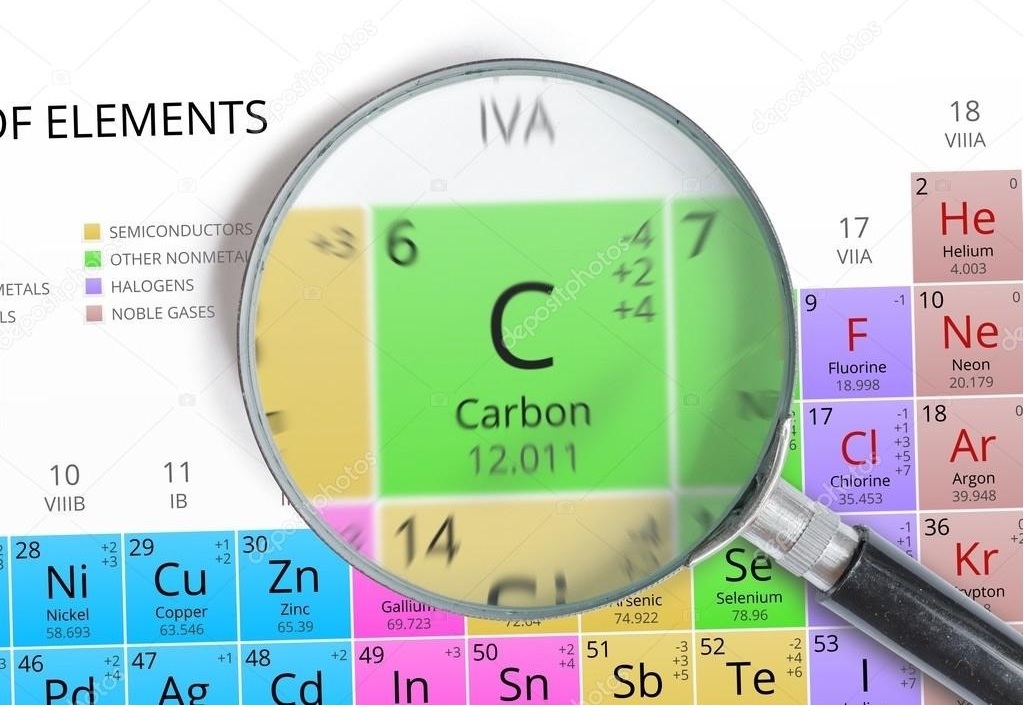
There are many theories about the origin of life within the solar system and, in particular, on the Earth. To date, the main and most well-argued of them indicate that organic forms may have originated from elements brought to our planet in the process of its formation from the protoplanetary disk, the gas-dust cloud surrounding our young Sun, or were introduced into the solar system much later from the interstellar space. The latter theory, according to the recent research published in early 2021, is important and is based on assumptions about the origin of carbon, namely the organic molecules it is a part of.
Previously, scientists believed that carbon on Earth came from molecules that were primarily in the gas of nebulae. This model assumes that at the time of the Sun’s formation, all the elements that would later form planets evaporated, and as the disk cooled, some of these gases condensed and became suppliers of chemical ingredients to solids that later formed rocky planets. But what about carbon? Let’s return to the stage of formation of planets in the solar system. The predecessors of the planets, the so-called planetesimals, during their early formation held carbon collected from a gas-dust cloud. Heated planetesimals melt, form nuclei, and lose gas by evaporation as a result of high temperatures within the protoplanetary disk, and as a result most of the carbon must be lost.
This is evidenced by studies of the nuclei of planetesimals, which are currently preserved in the form of meteorites. In addition, carbon on the planet must exist in the right proportions to sustain life as we know it. Too much carbon – and the Earth’s atmosphere will be similar to Venus, retaining heat from the sun and maintaining a temperature of about 470 °C. Too little carbon – and the Earth will resemble Mars with a temperature of about minus 50 °C, unable to support life in water.
Therefore, the condensation model, as a theory of carbon retention on Earth, is not suitable. Most of the carbon was delivered to the protoplanetary disk in the form of organic molecules. However, when carbon evaporates, volatiles are produced, which require very low temperatures to form solid particles. More importantly, carbon does not condense again into an organic form. This suggests a logical conclusion: is life on our planet a consequence of interstellar carbon travel? Then do planets with organic life forms still exist in the universe or did they exist?
За матеріалами:
- J. Li, E. A. Bergin, G. A. Blake, F. J. Ciesla, M. M. Hirschmann. Earth’s carbon deficit caused by early loss through irreversible sublimation. Science Advances, 2021; 7 (14): eabd3632 DOI: 10.1126/sciadv.abd3632
- Marc M. Hirschmann, Edwin A. Bergin, Geoff A. Blake, Fred J. Ciesla, Jie Li. Early volatile depletion on planetesimals inferred from C–S systematics of iron meteorite parent bodies. Proceedings of the National Academy of Sciences, 2021; 118 (13): e2026779118 DOI: 10.1073/pnas.2026779118
Детальніше за посиланням: https://www.sciencedaily.com/releases/2021/04/210402141742.htm
What is Life?
http://www.whatislife.ie/downloads/What-is-Life.pdf
“WHAT IS LIFE?” іs a popular science book by Erwin Schrödinger (an Austrian theoretical physicist, one of the founders of quantum mechanics, winner of the Nobel Prize in Physics in 1933, a member of many academies of science), written in 1944 on the basis of a series of public lectures he gave in Dublin. In it, Schrödinger tries to explain biological processes in terms of physics. This book became a classic of popular science literature and played an important role in the development of biology, especially genetics, as it attracted the attention of representatives of the “exact” sciences. One of the most important theoretical predictions in the book “What is life?” there is an assumption that the physical carrier of hereditary information is an APERIODIC CRYSTAL (ie a non-periodic crystal). A CRYSTAL is a solid body with an ORDERED INTERNAL STRUCTURE. At that time, there was not enough experimental evidence that it was DNA. Later, this statement was proved by the discovery of the structure of DNA and the decoding of the genetic code.
The vast majority of solids in nature have an ordered structure. For example, almost all minerals and all metals in the solid state are CRYSTALS. The concept of “aperiodic crystal” was introduced by Erwin Schrödinger in connection with the discussion of gene structure. In his popular book “What is life?” in 1944, Schrödinger tried to explain HOW HERITAGE INFORMATION IS STORED: molecules were considered too small, amorphous substances were clearly chaotic, so it had to be a kind of CRYSTAL! And since the periodic structure cannot encode information, the structure of such a crystal that stores information must be APERIODIC!
DNA (deoxyribonucleic acid) having the properties predicted by Schrödinger was later discovered. DNA is a long polymer molecule that stores information about the structure of RNA and proteins, transfers it from generation to generation and implements a genetic program for the development and functioning of living organisms. DNA is an ordered structure, but consists of an aperiodic sequence of blocks – nucleotides (without aperiodicity there is no information). That is, molecules in living systems behave according to the laws of physics, not in a random way: they seem to accumulate ORDER.



brian0918,
Public domain,
via Wikimedia Commons

In this sense, a LIVING ORGANISM is not just billions of molecules with chemical reactions inside, such an analogy works poorly. Rather, it is a mechanism, a mechanical watch made of very special “aperiodic solids”. These mechanisms can do a lot, but the main thing is to build yourself, to replicate as ROBOTS that work in a factory for the production of their own kind and are themselves such a factory.
I wonder if people will make such a ROBOT, will they consider it ALIVE?
http://www.whatislife.ie/downloads/What-is-Life.pdf,
https://kot.sh/statya/4675/chto-takoe-zhizn
On the left is a model of an ordinary periodic crystal (ice). On the right is an aperiodic crystal model (double helix of DNA) – https://kot.sh/statya/4675/chto-takoe-zhizn
High-entropy alloys (HEA) is alloys containing 5 or more metal elements, with the concentration of each ranging from 5-35 at.%!
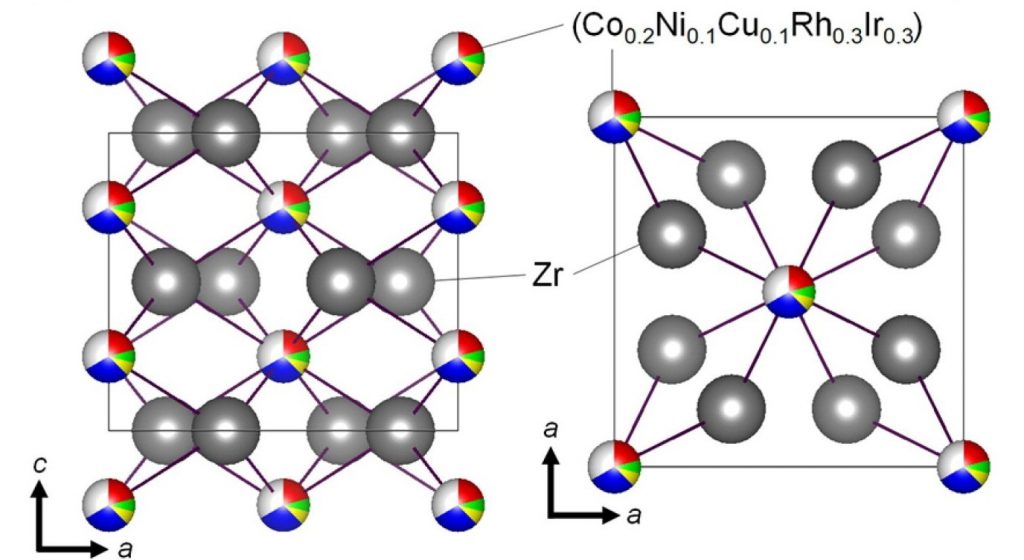
In recent years, the physical and mechanical properties of HEAs have been the subject of increased attention of researchers. The properties of HEAs may be unique, rather than the average properties of the elements of which they are composed. So scientists from Tokyo Metropolitan University have developed a new superconductor Co0.2Ni0.1Cu0.1Rh0.3Ir0.3Zr2
https://www.tandfonline.com/doi/full/10.1080/21663831.2020.1860147?scroll=top&needAccess=true
The approach to finding superconducting properties is unique. The composition of Co0.2Ni0.1Cu0.1Rh0.3Ir0.3Zr2 was developed on the basis of information about the crystal structure (type CuAl2 and TrZr2) from the NIMS database (SuperCon). The polycrystalline sample of the superconductor was prepared from pure metals by arc melting. The superconducting transition of the obtained semiconductor was observed at 8.0 K.
Note that teachers of the Department of Metal Physics in their research also use information from the NIMS database: https://www.nims.go.jp/eng/index.html
The “weightless” battery for transport will allow to refuse accumulators
Heavy and bulky batteries severely limit the capabilities of new electric vehicles. An interesting alternative to traditional methods of energy storage is offered by engineers from Sweden. They reported a breakthrough in the creation of a “weightless” battery, which can serve as both a source of energy and a structural component of a car or aircraft. While it does not have a very high energy density, but in the next phase of research it will be tripled.
A team from Chalmers University of Technology studied structural batteries for several years and concluded that it is better to use carbon fiber as a material, which has excellent and well-studied mechanical properties and has the ability, after some processing, to perform the functions of an electrode.
In 2018, scientists published a study that describes a type of carbon fiber with the required arrangement of crystals, which provides the necessary transport strength and electrochemical capacity during energy storage. Now, wanting to find practical application of their ideas, they have made a structural battery of carbon fiber, which is ten times more efficient than the previous version.
Graphene with a “Japanese” lattice structure can be a superconductor!
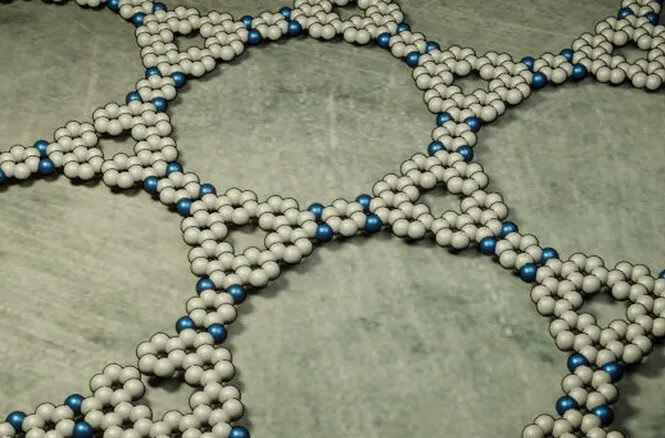
Physicists have discovered that in graphene with a structure of the “kagome” type the electrons are localized between hexagons of carbon atoms. This means that such graphene can pass into the superconducting state.
At first stage, researchers showed by theoretical calculations that graphene with a structure of the “kagome” type must have unique electrophysical and magnetic properties, different from those of graphene with a “traditional” atoms’ arrangement. To obtain “kagome” graphene, scientists deposited the original organic substance onto the silver substrate by evaporation from the gas phase, and then heated it. The obtained monolayer accurately reproduced the shape of Japanese weaving and consisted of hexagons separated by triangles. At the next stage, researchers studied the structure and electrophysical properties of this material using scanning tunneling microscopy and atomic force microscopy. It has been revealed, that when the voltage is applied to the ends of graphene plate, electrons of a certain energy fall into triangles in the structure of the material and are “closed” in them. Such behavior is not characteristic of conventional graphene, in which electrons are delocalized. The accumulation of electrons affects their interaction with each other. This means that theoretically such material can pass into the superconducting state.
The corresponding paper has been published in the journal Angewandte Chemie International Edition (https://doi.org/10.1002/anie.202016469).
Mankind reproduces a lot of materials’ properties in our modern devices and products!

One example is the natural stone ulexite (or boronatrocalcite). This stone has been known since 1849 and is named after the German chemist G.L. Ulex, who was the first to perform a correct analysis of this mineral. Having a small hardness (according to the Mohs scale it has 2), ulexite always fascinated people with its “cat’s eye” effect, he was attributed various magical properties ? But its “magic” has a completely scientific explanation – the structure of the crystal resembles needles arranged parallel to each other, a kind of natural bunch of optical fibers.
Ulexite clearly demonstrates the relationship between chemical composition, microstructure, and physical properties. Light passes through such crystals in a similar way as in a TV: the stone passes through any image and reflects it on the reverse side. This optical property makes ulexite unique among other minerals. Being polished from both sides, the stone transfers the image from one side to the other. If you put the text under its bottom, the letters “appear” on its surface.
Today such optical crystals are synthesized artificially and used in fabrication of medical endoscopes, sensors, and fiber optic cables to provide intercontinental communication, as well as in computer networks. However, the most common application of ulexite is jewelry.
FULLEREN FLOWERS FOR A SMARTPHONE
Missed the spring? Tired of winter? Do you finally want warmth, sun, beauty, and flowers?
We offer to admire with us the beautiful fullerene flowers that material scientists from the South Korean Pohang University of Science and Technology received and published in the journal Scientific Reports (https://www.nature.com/articles/srep32205).
In the era of miniaturization of electronics, the discovery and fabrication of various micro- and nanoscale structures that can operate as transistors, LEDs, sensors, and other solid-state converters is particularly important! By controlling the structure and morphology of the crystals, it is possible to provide nanoparticles with a certain catalytic activity, electrical conductivity, and photoluminescence. Therefore, these fullerene flowers can be mass-produced for use in smart electronic devices, smartphones, and other devices.
By the way, FULLERENE is a molecular compound that belongs to the allotropic form of carbon and has sphere-like shape. Allotropic substances are materials with the same chemical composition but different structure and properties. Carbon has the largest number of known allotropic forms: graphite, diamond, graphene, carbon nanotubes and several stable forms of fullerenes with 60, 70 and 540 carbon atoms. The C60 fullerene has shape similar to a soccer ball while the C70 resembles a rugby ball.
By mixing fullerenes of different species, it is possible to grow a crystal similar to the clematis flower with a size of only a few microns. We hope that soon they will delight us with their bright colors and speed of work in the new generation of smartphones. We are waiting for new things!
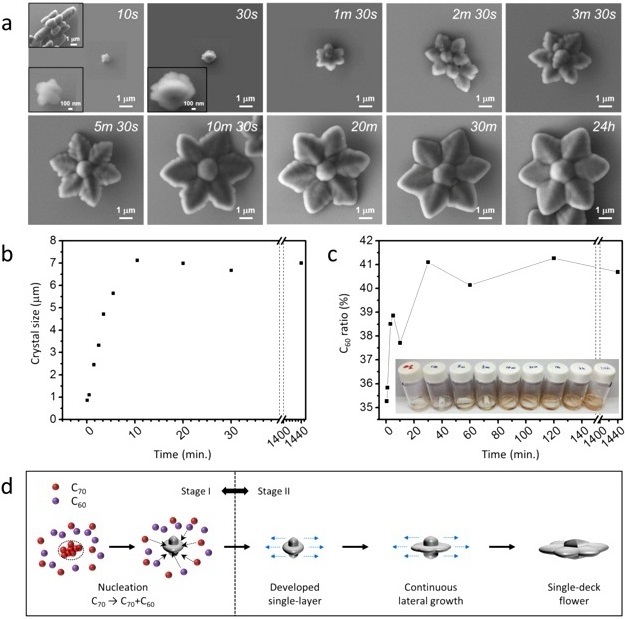

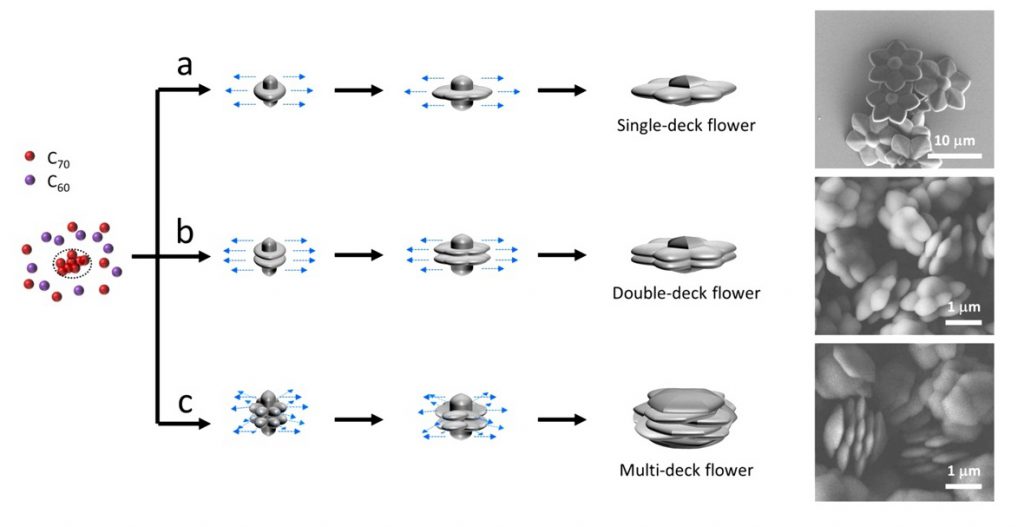
PREPARING FOR THE ANNIVERSARY OF THE CHERNOBYL DISASTER
On April 27-29, 2021, the Round Table “Nuclear Energy: History, Present, Future” and the VI International Conference “Problems of Decommissioning of Nuclear Energy Facilities and Environmental Restoration” INUDECO 2020 are being prepared.
These days, in the KPI campus, it is also planned to open a monument to the employee of the Chernobyl Nuclear Power Plant, Hero of Ukraine (posthumously), a graduate of Igor Sikorsky KPI – Lelechenko Alexander Grigorovich.
Do you know that nanoscale metal films are used as functional elements in modern nanoelectronics devices: computers, mobile phones and other devices?
That is, the layers of metals only a few nanometers of thick! Reducing the thickness to the nanoscale allows to achieve the unique properties in metals, which determines the possibility of their use in modern high technology.
The study of nanodimensional layers of metals is one of the main research areas of the Department of Metal Physics of Igor Sikorsky KPI.
Here is a review prepared by scientists from the Department of Metal Physics and published by one of the most famous world’s publishers Springer, which discusses the use of nanoscale magnetic films for magnetic recording technologies, spintronics and other applications.
https://link.springer.com/chapter/10.1007/978-94-024-2034-0_4
84% OF PUBLICATIONS WORLDWIDE WITH OPEN REFERENCES
In January 2021, Elsevier opened more than 12 million references lists, and the share of publications with open-access references worldwide reached 84%. Today, 53.6 million of articles with open references are available to the entire scientific community in the database of the Digital Object Identifier Registration Agency – Crossref DOI.
Currently, the Open Ukrainian Citation Index (OUCI) database has also grown significantly. The system now indexes more than 121 million publications worldwide. Therefore, any publisher who assigns a DOI to their published material can join the Initiative for Open Citations free of charge.
DEVELOPMENT OF COOPERATION WITH THE REPUBLIC OF UZBEKISTAN!
On March 3, 2021, the Ambassador of the Republic of Uzbekistan A.A. Kurmanov visited KPI.
At a meeting with the rector M.Z. Zgurovsky, the prospects of increasing the number of foreign citizens studying at KPI were discussed.
After the official part of the visit, the scientific advisor of the Department of Metal Physics Prof. S.I. Sidorenko had the opportunity to convey to the Ambassador of Uzbekistan proposals from the departments of IMZ named after Ye.O. Paton on the development of cooperation with KPI’s partner – Tashkent Polytechnica.
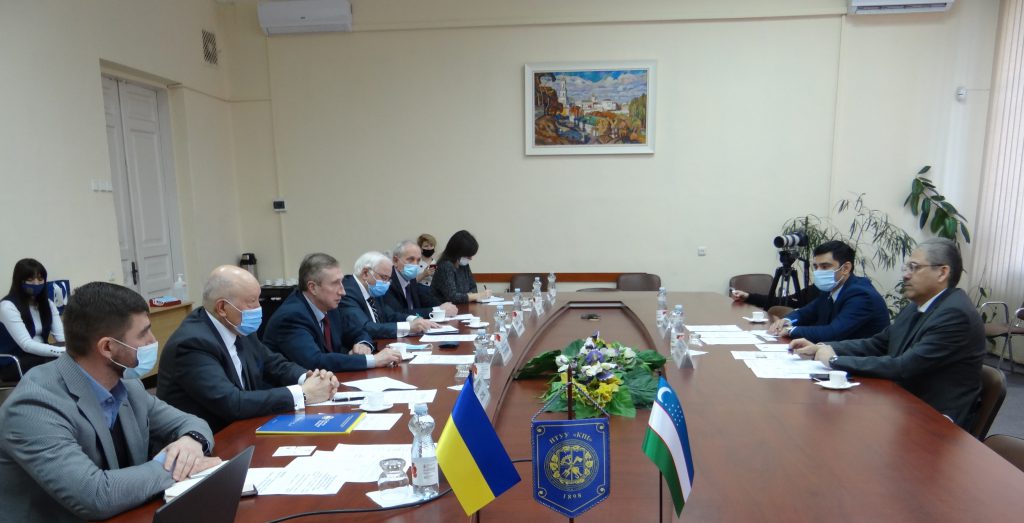

IN THE PERSPECTIVE – IN IMZ NAMED AFTERYe.O. PATON STUDENTS FROM AFGHANISTAN WILL STUDY
During the visit to the KPI of the Ambassador of the Islamic Republic of Afghanistan Mr. Wali Monawar, the scientific advisor of the Department of Metal Physics Prof. S.I. Sidorenko had the opportunity to convey to the distinguished guest the proposals of the departments of IMZ. named after Ye.O. Paton on the training of Afghan citizens in KPI in the field of materials science.
The distinguished guest promised to identify also other possible areas of cooperation with IMZ. named after Ye.O. Paton.
Mr. Ambassador proposed to renew the agreement signed in the early 2000s with Kabul University and to fill it with new content.
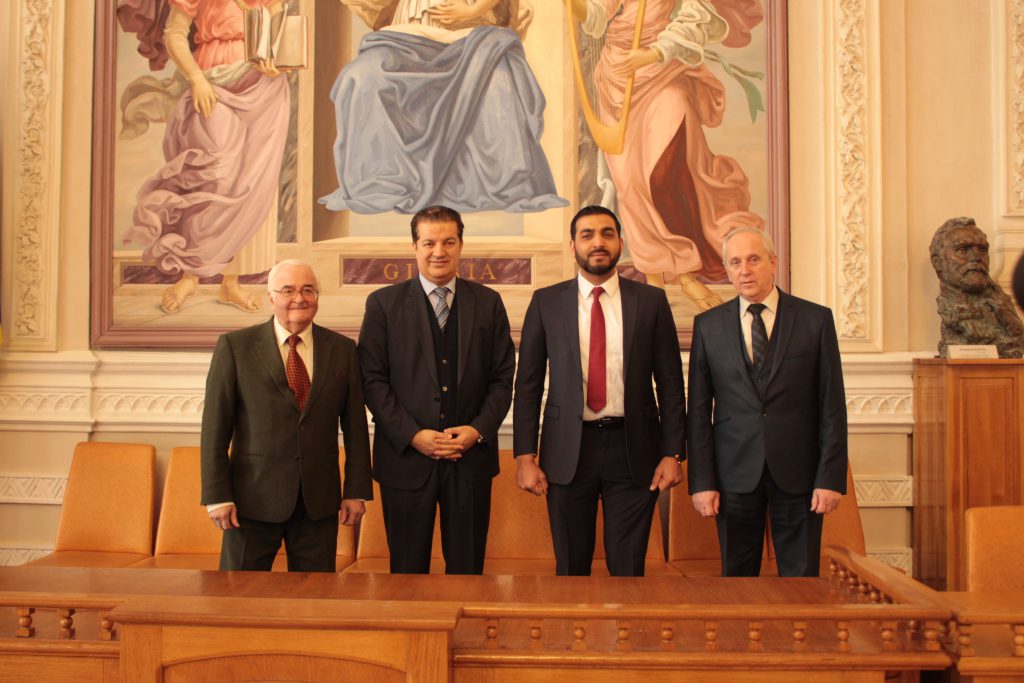
Molecular nanofibers that are stronger than steel and with properties similar to Kevlar are fabricated!
Researchers from MIT designed a small-sized molecules that spontaneously form nanoribbons with high strength properties when water is added.
Self-assembly is widespread in the natural world and is a way of organized structures’ formation in the living organisms. this phenomenon can be observed when the DNA spiral forms, or when a huge number of molecules combines to create membranes and other vital cellular structures. Everything moves to its right place without intervention of external forces in the process.
Inspired by the nature’s example, scientist and engineers have been trying to create molecules that assembled itself in water aiming to fabricate nanostructures, foremost for biomedicine applications such as drugs delivery. However, each time such small-sized molecular structures turned out to be unstable and disintegrated as soon as water was removed, or any external force was applied.
However, Julia Ortony, Assistant Professor of MIT’s Department of Materials Science and Engineering, and her team have developed a new class of molecules that spontaneously self-organize into extremely high-strength nanoribbons when water is added, while maintaining its structure after removal from water. These findings were published in the journal Nature Technology in 2021.

This material with abnormal mechanical properties is designed following the model of the cell membrane. Its outer side is “hydrophilic”, i.e., it likes to be in water, while the inner side is “hydrophobic”, trying to avoid water. Such configuration provides a driving force for self-organization, as the molecules are oriented in the way to minimize the interaction between hydrophobic regions and water, as a result of which they become having a nanoscale shape. The molecules themselves consist of three main components: the outer part (marked in purple in figure), which likes to interact with water; the inner part (marked in blue), which avoids water and aramids inside (marked in green), which connect the outer parts with inner and provide the finished material the properties of Kevlar (Kevlar is the trade name for a synthetic fiber (aramid) that has an extremely high strength). Nanoribbons based on such molecules possessed to be extremely strong, much stronger than steel.
Basing on the developed material, it is already fabricated the nanofibers which surface is covered with molecules that can remove heavy metals, such as lead or arsenic, from contaminated water. Based on the materials: “Self-assembly of aramid amphiphiles into ultra-stable nanoribbons and aligned nanoribbon threads” by Ty Christoff-Tempesta, Yukio Cho, Dae-Yoon Kim, Michela Geri, Guillaume Lamour, Andrew J. Lew, Xiaobing Zuo, William R. Lindemann and Julia H. Ortony, 18 January 2021, Nature Nanotechnology. DOI: 10.1038/s41565-020-00840-w.
Further information can be found via the link: https://scitechdaily.com/kevlar-inspired-molecular-nanofibers-constructed-that-are-stronger-than-steel/
On March 27, 1845, the German researcher Wilhelm Konrad Roentgen was born!

His name is now well-known for the discovery of high-energy electromagnetic rays, which are called X-rays throughout the world, and we call them Roentgen-rays.
For this discovery in 1901, Roentgen was awarded the Nobel Prize, which became the first in the category “Physics“. X-rays have given scientists (physicists, chemists, biologists, physicians) a tool to see the structure of matter at the atomic level. And today, the most sophisticated and advanced scientific devices (X-ray diffractometers, scanning electron microscopes, synchrotrons), which help to penetrate into the deep mysteries of matter, based on the use of X-rays.
In Ye.O. Paton Institute of Materials Science and Welding, in particular, at the Department of Metal Physics, methods of studying substances using X-rays are used both in scientific research and in teaching professional disciplines to Master’s and Bachelor’s students.
In the photographs, Mariana Verezhak, a graduate of the department, is conducting research at the ESRF in Grenoble. The graduate of the department Olena Zhabinska is working under the guidance of the associate professor of the department I.A. Vladimirsky using RIGAKU diffractometer.


RECOGNITION AND HIGH TRUST!
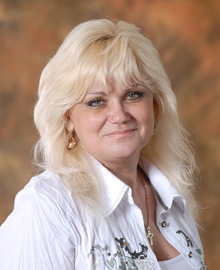
For many years, since the time when Academician V.N. Gridnev, being at that moment (in 1952) the Rector of KPI, founded the training of specialists in “Physics of Metals” at the KPI, the G.V. Kurdyumov Institute for Metal Physics of the National Academy of Sciences of Ukraine (together with I.M. Frantsevich Institute for Problems of Materials Science and E.O. Paton Electric Welding Institute) was and remains the basic institute for the Department of Physics of Metals.
Therefore, the promulgation of the Resolution of the Presidium of the NAS of Ukraine dated 03.03.2021 No. 87 “On approval of the Regulations on the Supervisory Board of the G.V. Kurdyumov Institute for Metal Physics of National Academy of Sciences of Ukraine and its team” aroused great interest both at the Metal Physics Department and at the Ye.O. Paton Institute of Materials Science and Welding, which includes the Metal Physics Department. According to the Regulations, the main purpose of the Supervisory Board is to conduct an independent evaluation of the results of scientific (scientific and technical, scientific and pedagogical, scientific and organizational) activities of the Institute for Metal Physics.
To the staff of the Supervisory Board (together with well-known material scientists of Ukraine: General Director of State Enterprise “ANTONOV” Bychkov S.A.; Adviser to the Deputy Prime Minister – Minister for Strategic Industries of Ukraine Gryshchenko S.G., Rector of Ivano-Frankivsk National Technical University of Oil and Gas, Academician of the NAS of Ukraine E.I. Kryzhanivsky, Dean of the Faculty of Physics of Kyiv Taras Shevchenko National University M.V. Makarts, Director of V.M. Bakul Institute of Superhard Materials of the NAS of Ukraine, Academician of the NAS of Ukraine V.Z. Turkevich, Vice-Rector of Sumy State University A.M. Chornous) included and Head of the Department of Metal Physics, Sc.D., Prof. Svetlana Mikhailovna Voloshko.
The staff of the Department of Metal Physics sees this as high trust and recognition of the authority and merits of Prof. Svitlana Voloshko as a professional of the High School of Ukraine, leader of the scientific and pedagogical team of the Department of Metal Physics, seven-time winner of KPI in the category “Teacher-Researcher”.
Colleagues and students today wish Prof. Svitlana Voloshko success in performing new responsible functions entrusted to her by the National Academy of Sciences of Ukraine and the High School!
On the Verge of a Quantum Revolution in Materials Science
Scientists from the Canadian company D-Wave, specializing in the production of quantum processors, simulated the phenomenon of exotic magnetism, for the theoretical prediction of which in 2016 was awarded the Nobel Prize in Physics.
Recent D-Wave research shows that quantum processors based on the principle of quantum normalization, although narrowly focused on optimization tasks and unable to use all the power of a full-fledged quantum computer, are able to perform simulations 3 million times faster than a classic processor CPU and have a real practical application.
In “Scaling advantage over path-integral Monte Carlo in quantum simulation of geometrically frustrated magnets”, published in the journal Nature Communications (DOI 10.1038 / s41467-021-20901-5), D-Wave researchers programmed a system of 2,000 qubits for simulation of a quantum magnet using artificial spins by path-integral Monte Carlo method.
The successful demonstration of such a complex phenomenon is truly significant for Materials Science and the advancement of quantum computing.
And if you are already impatient to start programming on a quantum computer, then IBM Quantum was created especially for you – a Cloud Platform for running programs on IBM Quantum Computers (https://quantum-computing.ibm.com/)


A working visit of I.O. Kruhlov who is a PhD student of Metal Physics Department to Tokyo city took place in November 2019, within the framework of scientific collaboration with the Japanese Research Synchrotron Facility RIKEN SPring-8 Center. The National Museum of Modern Science and Innovations – Miraikan – was also visited.
